Cuba
We’ve all heard stories about Cuba. Many of us dream about visiting Havana and the countryside. However, nothing can prepare you for the experience, simply because Cuba is unlike any other place in the world. It does not have the elegance of Paris, the joyfulness of Rome, the peacefulness of Oslo, the multiculturalism of London, or the sheer size of Shanghai.
People
People make each place different. Cubans learn to live with severe limitations (particularly from our point of view), but their lives are colorful, robust and—again from our perspective—a bit uptempo.
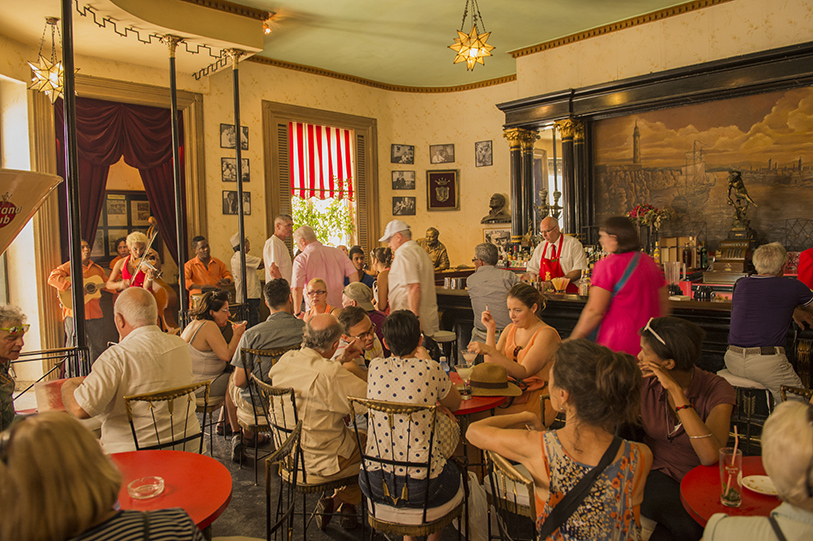
El Floridita Bar
No, the island isn’t modern, and you won’t find much luxury in Cuba. Cuba exists in a time capsule that reminds us how things once were, but also how people can still be happy with so little. Take a walk before sunset along the Malecón, and you’ll see locals sitting on the seawall, enjoying themselves and relaxing. Some might be playing music, some might be with family or friends. Still others might be drinking or engaging in public displays of affection.
Transformation
Havana is going through a swift transformation (despite limitations imposed by its Government) due to the influx of tourists from all over the world, which now includes the U.S. On my last visit, I met people from China, Japan, Korea, all over Europe, as well as Canada, Mexico, Argentina and Brazil.
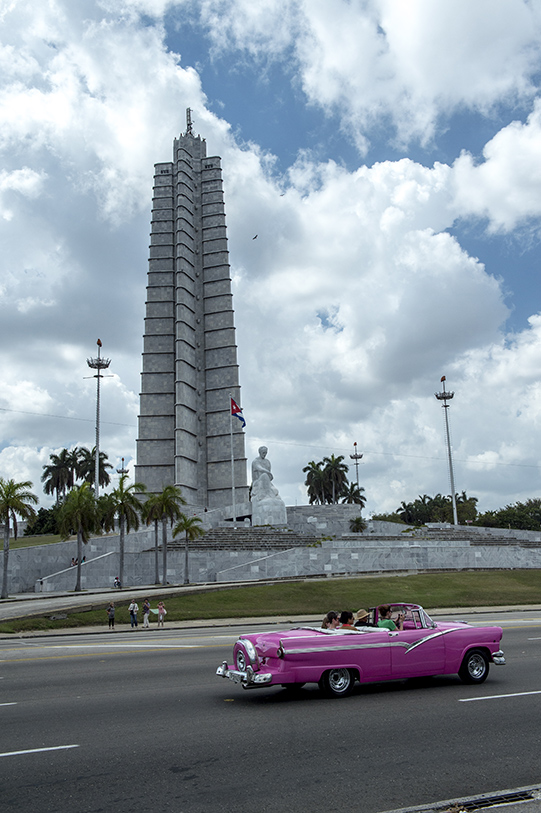
Classic Havana
Daytime in Old Havana is colorful and entertaining: The narrow streets fill with people, 19th-century buildings are home to many small private shops. The bars and restaurants (including El Floridita, the Ernest Hemingway hangout) offer mojitos and daiquiris to assist you through the heat of the day, while salsa music is nearly everywhere, played by bands of old men or groups of young women…you can’t help but feel the music inside you.
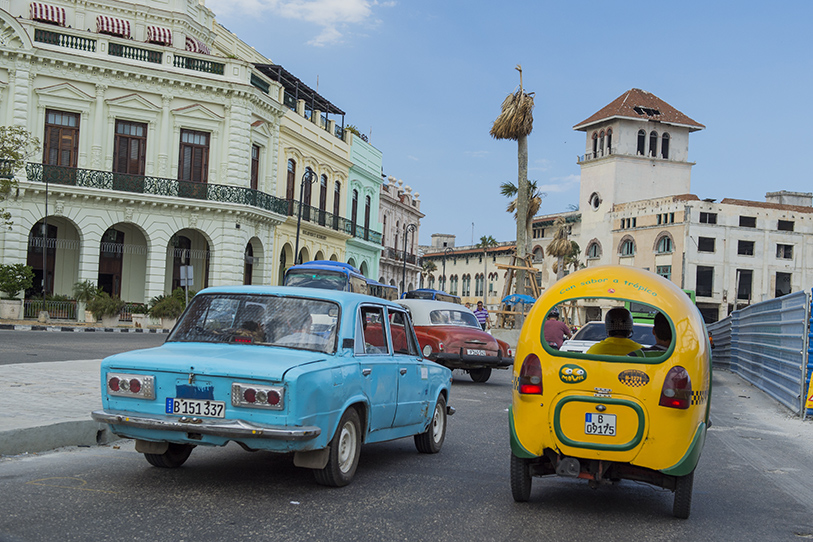
Road View
Cars
You can’t talk about Havana or Cuba without mentioning the fantastic collection of cars from the ‘40s and ‘50s, many fully restored to their past glory, rolling down the boulevards in every color of the rainbow. There are “eye-candy” convertibles and sedans in lime, pink, yellow, blue, black and white—and they are all available for hire as taxis. If Paris has the Eiffel Tower, San Francisco the Golden Gate Bridge, Rome the Coliseum, Beijing the Great Wall, and Cairo has the Pyramids…then Havana has the best and most-amazing collection of nostalgic cars—moving freely but, not surprisingly, under the watchful eye of the Government, which also makes them that much more secure and peaceful.
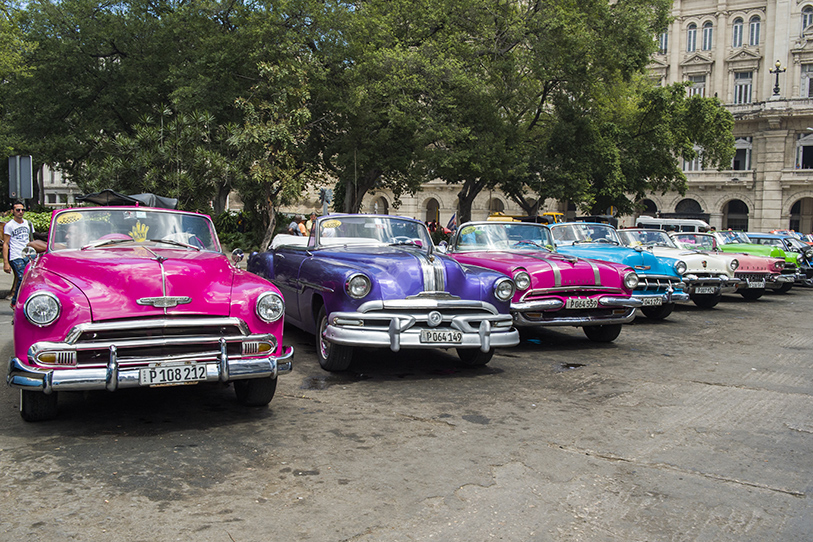
Car Eye Candy
Night Life
Nighttime has another flavor. It is a time to eat well, and there are great places that serve fresh seafood, delicious pizza, an array of tropical fruits, plus many other styles of cuisine, including Italian, Chinese, and Japanese. Evening shows are a must, even if they’re not at the Buena Vista Social Club. Several clubs in Havana offer very colorful stage shows and salsa dancing into the wee hours of the night. I wasn’t able to resist the urge to salsa myself. I doubt anyone visiting Havana would.
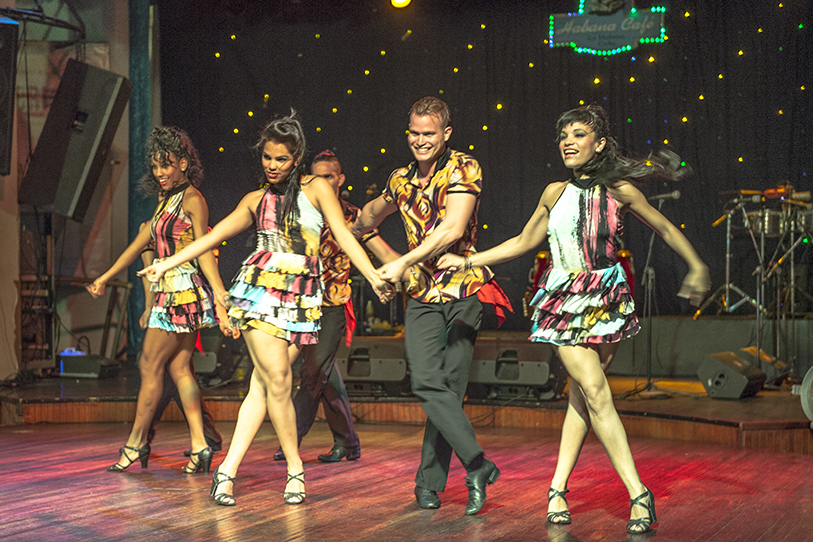
Buena Vista Social Club
Cigars and Rum
Have I mentioned the cigars? Or the Santiago de Cuba rum…aged 15, 20 or 30 years? A shot will cost you $1 for each year it has sat in an oak barrel, and all of it is superb. We all know Cuban cigars are outstanding, and they’re available in many of the hotels, but a better choice is to visit the wholesale places in town. All taxi drivers know their addresses and hours. You’ll find everything from Cohiba to Montecristo and Romeo y Julieta, plus several others rolled before your eyes.
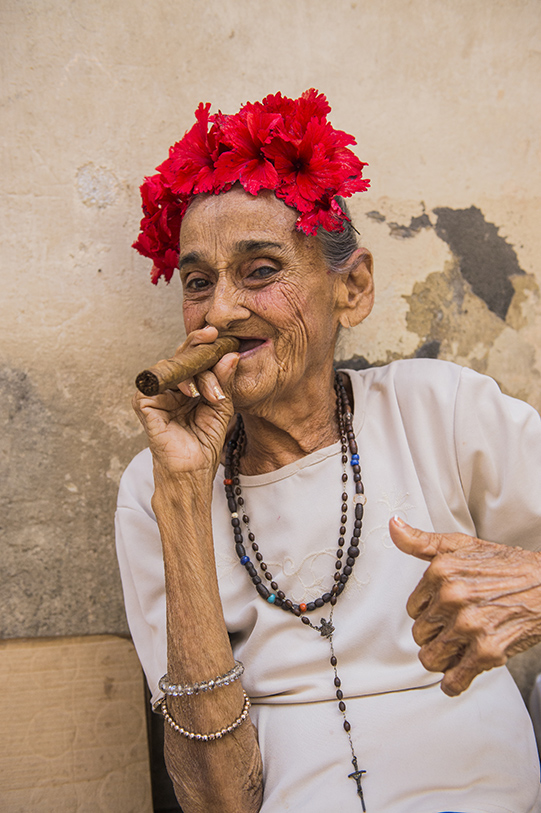
Woman and Cigar
A visit to a cigar factory is a requisite, as is touring a few of the city’s art and history museums. My own visits opened my mind, and gave me a deeper respect for the country and its people. Taxi drivers know a lot, so never be shy to ask them questions. I always found them happy to help.
I Can’t Get Enough
I can never get enough of Cuba. I have been there four times. Since my first visit in 1980 I see changes in all aspects of life. I can only can say that I’m planning a fifth visit in December and hope to also schedule a Cuba photography workshop with Mark Dubovoy and Jim Taskett. Cuba is refreshing. It is eye candy. It is what travel is all about….
Diving
My last visit to Havana was only the opener to the main event: diving at “Jardines de la Reina,” or “Gardens of the Queen,” National Park.
The nature reserve and archipelago is a large coral reef and mangrove forest about 48 miles southeast of Cuba’s southern coast. Years ago, the Cuban Government granted a permit to just one operator (Italian) to establish a floating commercial and conservation base. The operation’s name is Avalon Cuba Fishing Centers. It began years ago with a floating headquarters and a few vessels for fishing, but later on diving services were added after placing underwater hooks at the many good dive sites. Thus, NO anchors need to be dropped on the fragile coral; heavy ropes lead to the surface and are attached to floating buoys. There are numerous dive sites, so there’s no need to dive on the same site everyday, which allows the reef and wildlife to recover after divers visit.
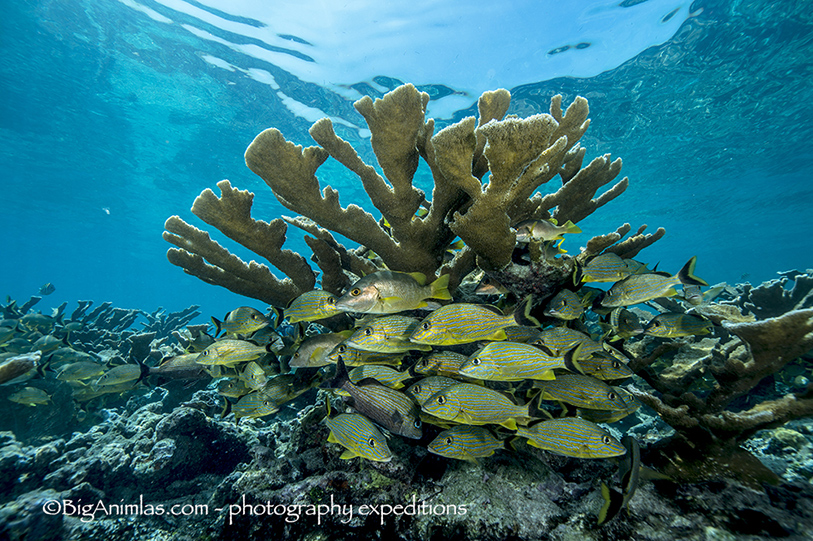
Elk Horn Coral
The reefs in Gardens of the Queen are surprisingly untouched, and I have not spotted any broken coral in the area. At one site, there is a garden of literally more than five dozen distinct elkhorn coral. They are beautifully situated in shallow water no more than 16 feet deep against a sandy bottom, with hard-coral polyps reflecting the sunlight, in a yellow glowing color amid thousands of fish. Porgy, schoolmaster, blue-striped grunt, and goatfish all roam in big numbers among the coral heads and arms.
At the Los Sabalos dive site, I discovered a complex array of grottoes and pillars. Amid those dramatic formations, I photographed a large school of tarpon hunting anchovies. Then all of a sudden, I heard Noel, my dive guide, screaming underwater through his regulator, and I raised my eyes above my viewfinder to see a 14-foot great hammerhead passing between Noel and me. Noel got it on his video. I got it in my personal memory bank.
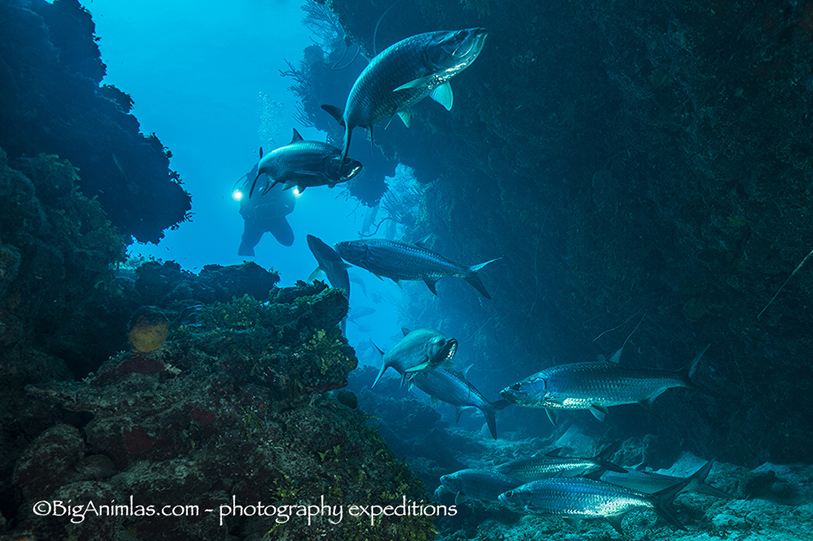
Tarpon Alley
Shark feeding also takes place on several dive sites. Divemasters carry boxes full of fish extracts, and then place the boxes among the coral heads. During my visit, it only took a few minutes for a dozen Caribbean reef sharks to start arriving from different directions. Even more of them started arriving 10 minutes later. At one point, I counted more than 35 sharks.
Lying on the sandy bottom at 45 feet, looking through the blue water at sharks circling above my head but exclusively fixated on the box with bait, I could even be careless about my bubbles.
At another location, the bait was used to attract silky sharks. They arrived even faster, and in greater numbers. To my delight, Noel advised me that if he removed the box from the reef, the sharks would follow him to the boat, leaving me alone to photograph the sharks swarming around the dive boat, all in the purest blue water. It was a fantastic photo opportunity, with numerous shark silhouettes beside the dive boat, all above me.
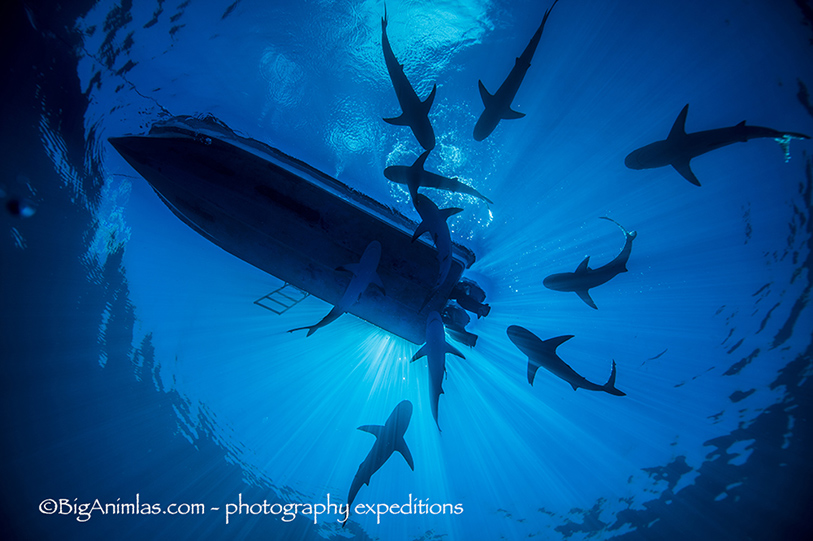
Shark Silhouettes
At still another site, la Finca de Pepe, Noel brought the bait box with him again, but this time it was to attract goliath groupers—each three- to four-feet-long, and weighing from 100 to 120 pounds. At the start, they were shy to approach us, but only a few minutes later, as we hovered in one place, a grouper was in my face and just above my camera dome. The reef fishes here have no fear of divers. They don’t swim away, since no fishing or hunting has been allowed in these waters for many years. The shallow and healthy reef of yellow and black coral—plus red and purple sponges 10 to 15 feet below the surface—are all washed in bright sunlight, and colors of the fish will be vivid to your eyes….
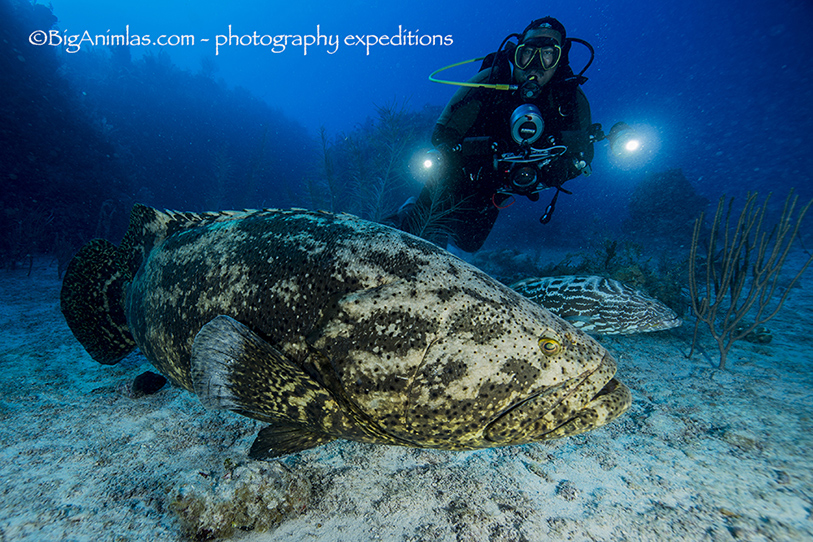
Goliath Grouper and Noel
I must also mention the presence of a few saltwater American crocodiles that are amazingly friendly. Yes, these crocs have been fed by the floating center for years. The local divemasters will make a call, and then the crocs come out of their hiding places among the mangroves to hang out beside the dive boats, hoping for a handout. The crocs here are small, from four- to five-feet-long. At first, most divers elect to stay onboard, and take pictures from above of the crocs’ brownish yellow bodies against the refreshing blue water. However, as soon as one diver goes into the water and starts photographing them from the side, just two or three feet away, others realize that the approach is easy. As long as you do not touch the crocs, divers can approach one at a time and come home with exciting images of an animal that was once considered fearsome, but now the fear is gone and beauty is what remains.
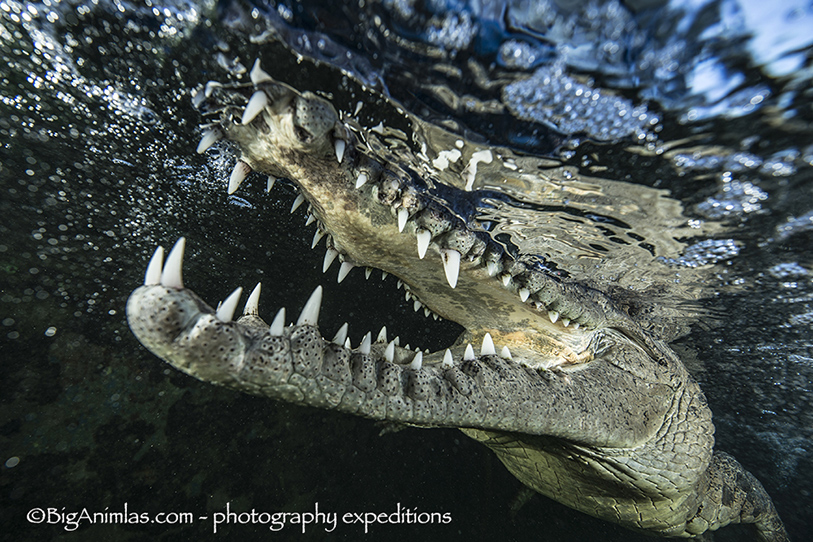
Crocodile open Jaw
The weather was superb during my spring stay, warm and sunny on the surface, with a water temperature rising to 82F (28C). A 3-mm or 1/8” wetsuit was just enough. Underwater visibility differs from low to high tide, ranging from 60 feet (20 meters) to 100 feet (30 meters). The operation’s newest liveaboard is the Avalon II—just one year old, 110-feet-long, and able to accommodate 16 people in eight fully air-conditioned double cabins, each with a private head and shower. There’s also a large diving deck and good diving gear for rent. Nitrox is also available.
What else can you ask for? Oh yes, a Jacuzzi on the top deck and superb meals, with pasta, lobster, shrimp, salads, and plenty of tropical fruits, including guava, pineapple and papaya. Experienced, polite, and accommodating dive guides all are English-speaking, as are key members of the crew.
It is well worth it to visit Havana to experience its culture, music, dance, architecture, and city vibes, but it is also worth pointing out that the diving experience in Cuba is truly superb.


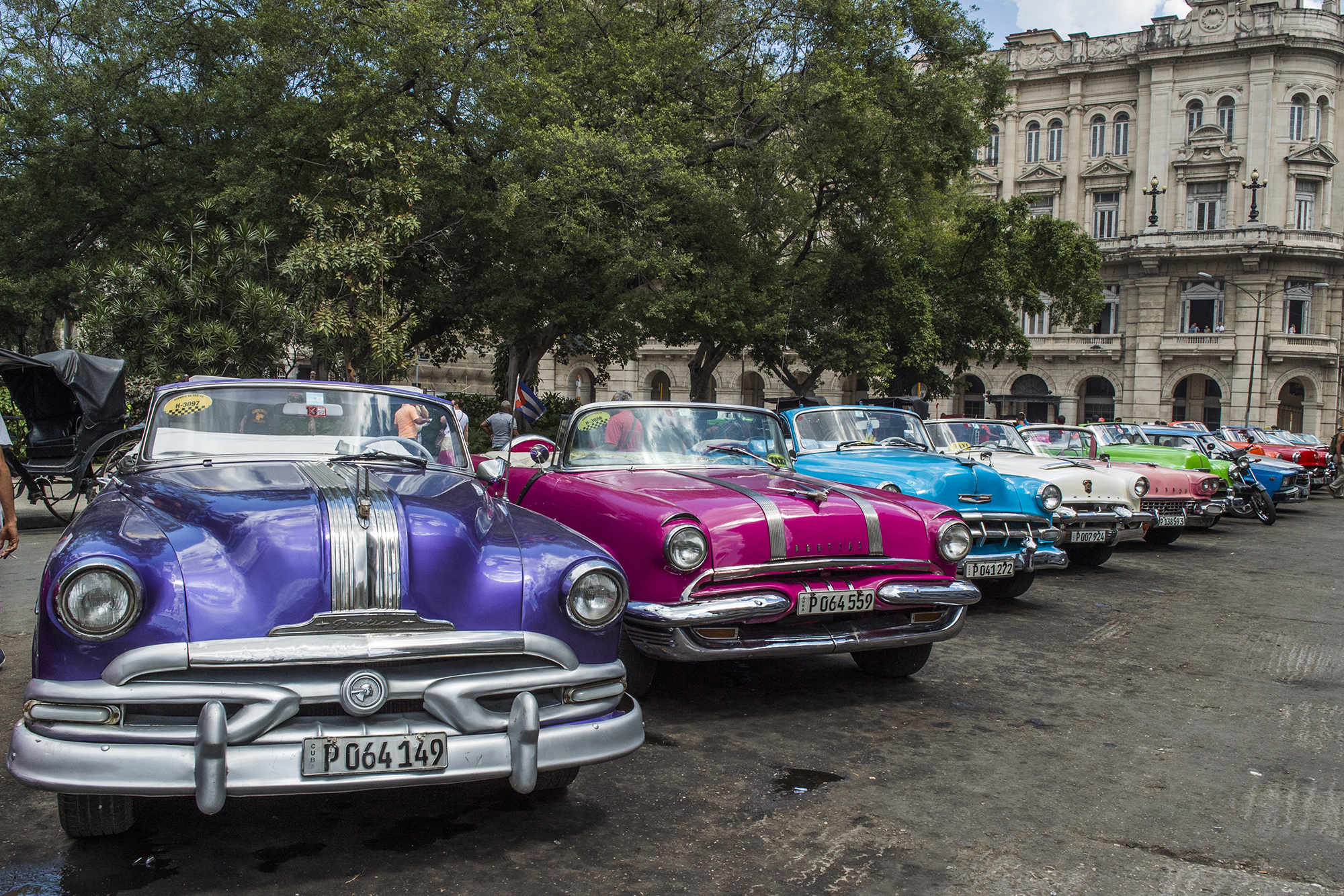



Your Thoughts